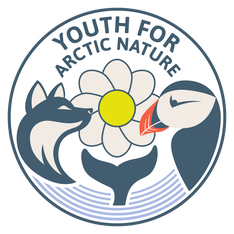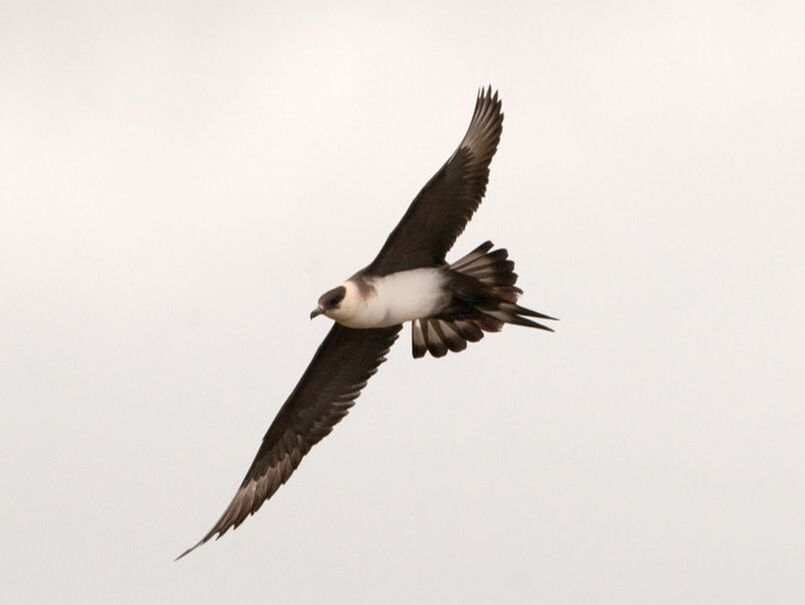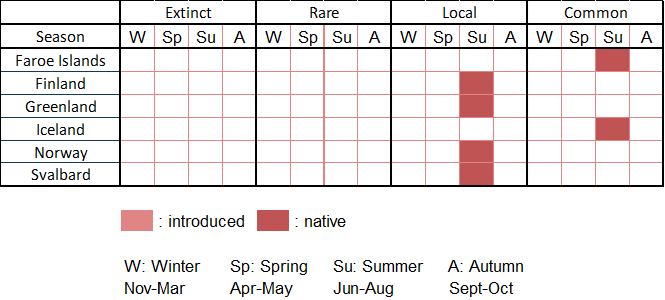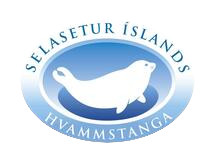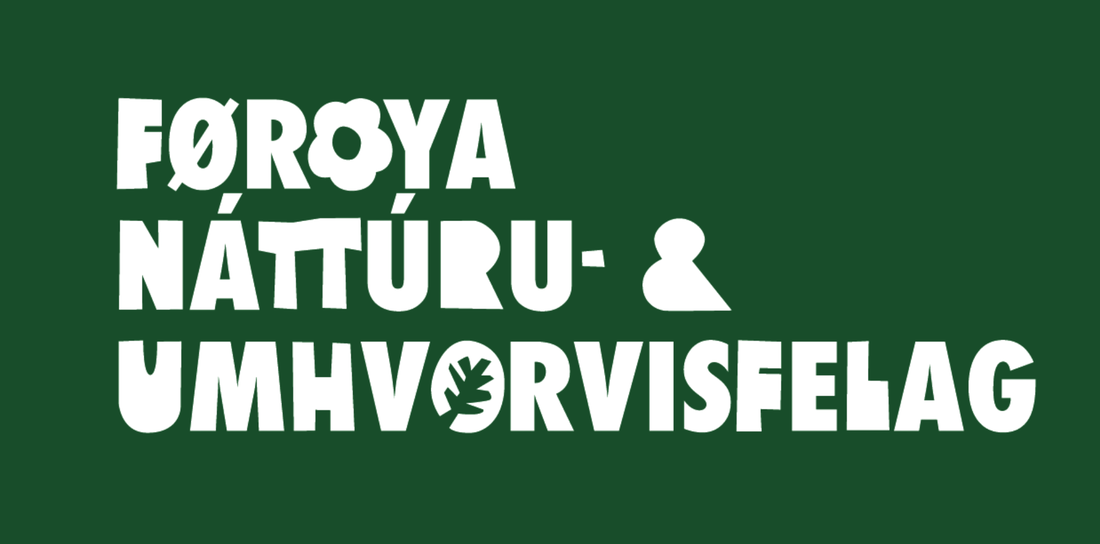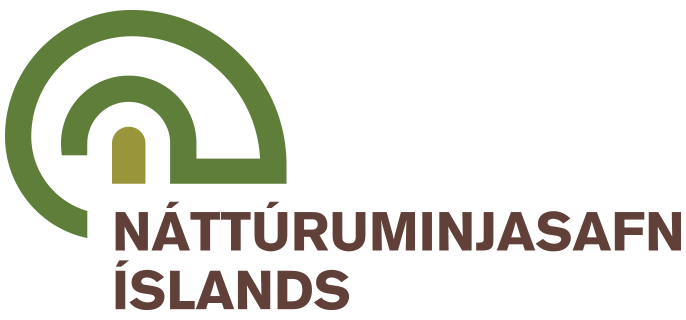|
Vulnerability: least concern (population stable) Invasive: no Identification: easy (similar species in the range) Monitoring: difficult |
|
What is it? The Arctic skua is relatively small for a skua species, with lengths between 41cm and 46cm for wingspans between 107cm and 125cm. There are three morphs of Arctic skuas. The most common morph in the East Atlantic Arctic is the pale morph with a white neck, breast and belly (see image on right). The other two are an intermediate morph, and a mostly uniform dark morph (see cover picture). The tail extends in a semi-circle with the two innermost feathers being much longer, although not as long as seen in the long-tailed skua. |
|
Where is it? As its name suggest, the Arctic skua is an Arctic breeding specialist and a circumpolar bird. Globally, it is found everywhere on the Arctic coast except for northern and eastern Greenland, the extreme North of Canada, and some Siberian islands. In the East Atlantic Arctic, it breeds throughout Svalbard, Iceland, Greenland except the North and Northeast, the Faroe Islands, and around most of Fennoscandia. It migrates to the southern hemisphere in winter including to South America, southern Africa, and Oceania.
|
|
Interesting facts |
- The other name of the Arctic skua is a parasitic jaeger. The name comes from its well-known kleptoparasitic behavior. Kleptoparasitism means that this bird gains most of its food by stealing prey from other birds.
- Although it is globally considered of least concern, some Arctic skua populations are locally endangered such as the Icelandic or British populations.
Pictures
- "Arctic Skua" by Sergey Yeliseev is marked with CC BY-NC-ND 2.0.
- "Arctic Skua" by Sergey Yeliseev is marked with CC BY-NC-ND 2.0.
References
- Arctic Skua Bird Facts | Stercorarius Parasiticus. (2019). The Royal Society for the Protection of Birds - RSPB. https://www.rspb.org.uk/birds-and-wildlife/wildlife-guides/bird-a-z/arctic-skua/
- BirdLife International (2022) Species factsheet: Stercorarius parasiticus. Downloaded from http://www.birdlife.org on 24/03/2022.
- Skarphéðinsson, K. H. (2018). Kjói (Stercorarius parasiticus). Icelandic Institute of Natural History. Downloaded from https://www.ni.is/node/27109 on 24/03/2022.
- Stoddart, A. (2016). Juvenile skua photo ID guide. Bird Guides.
